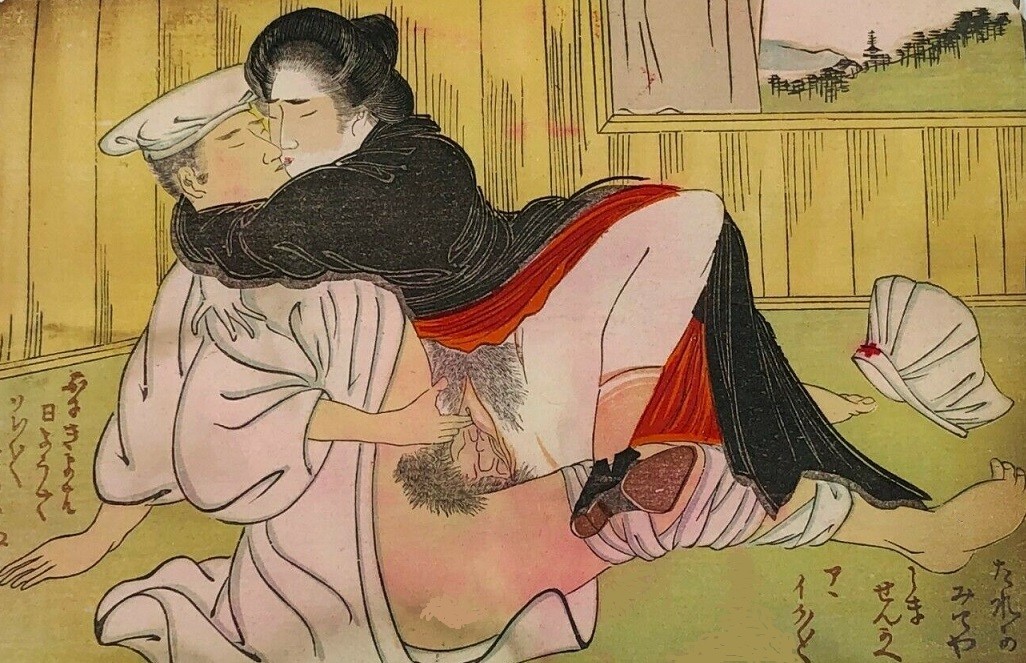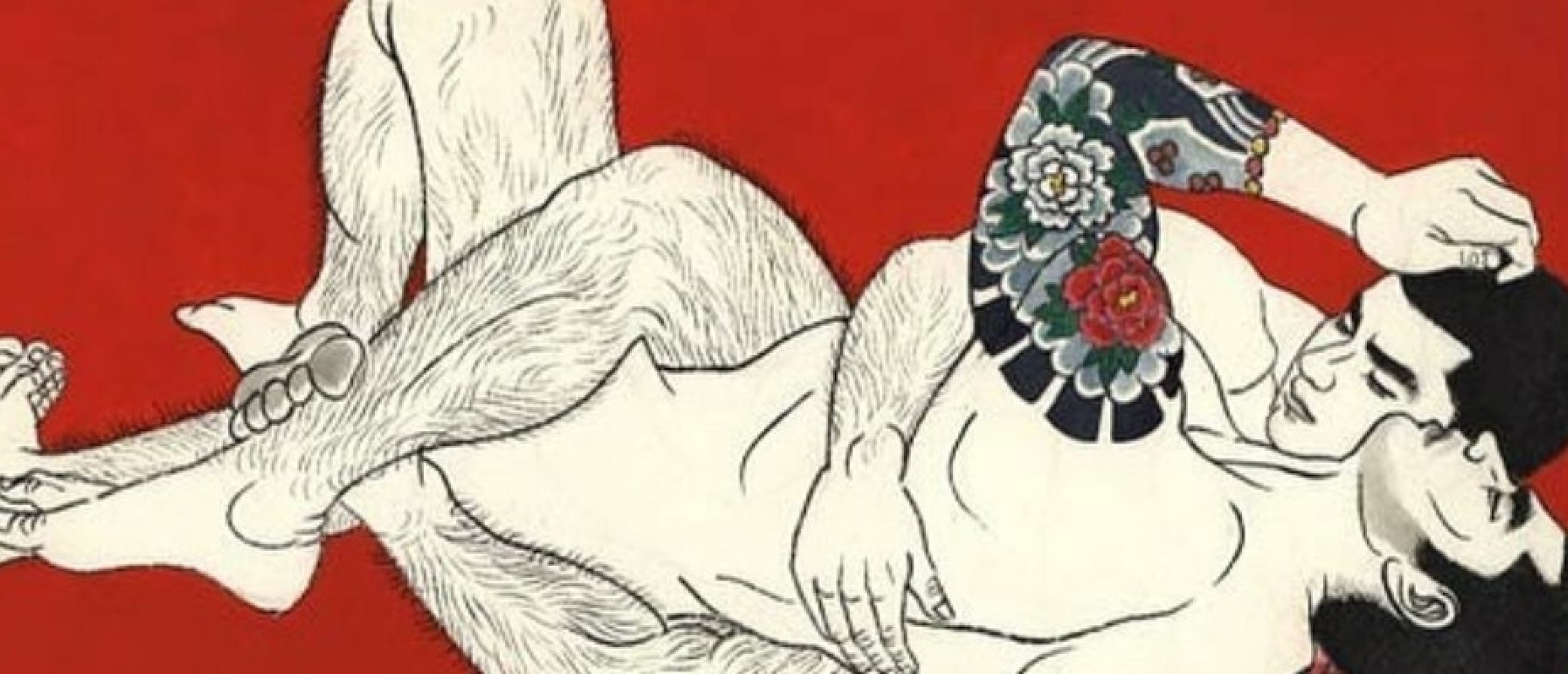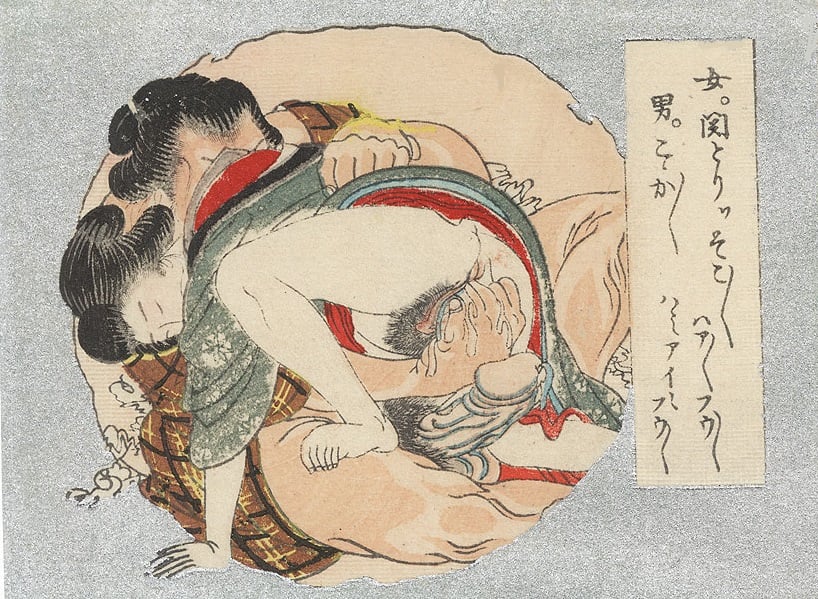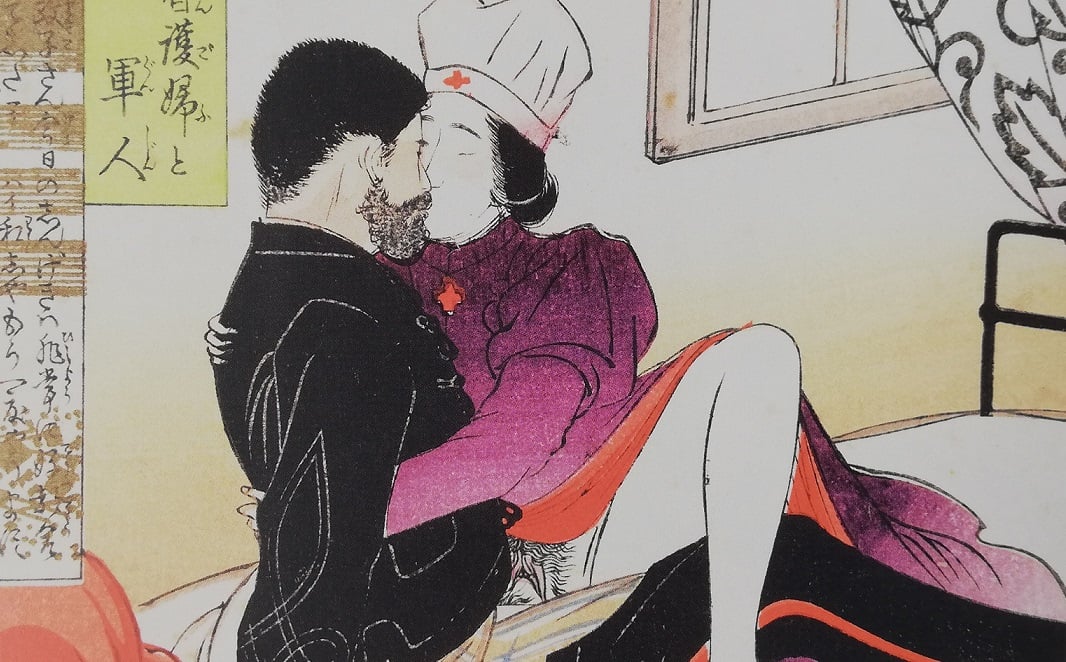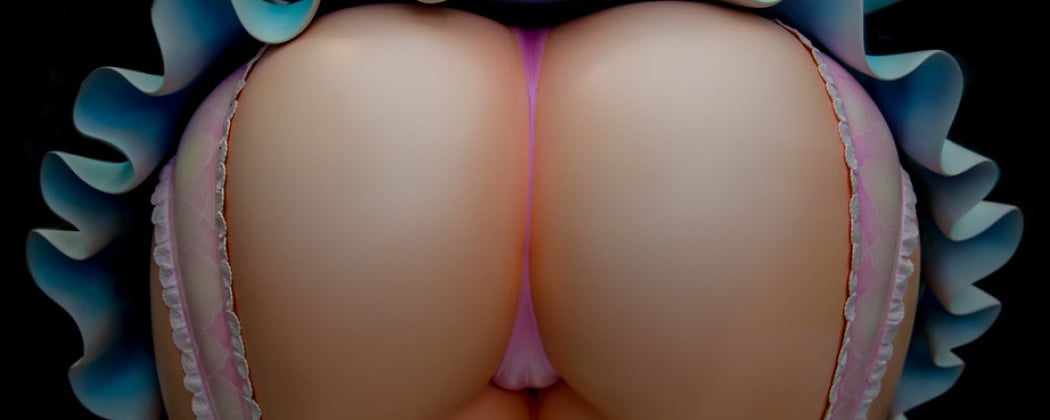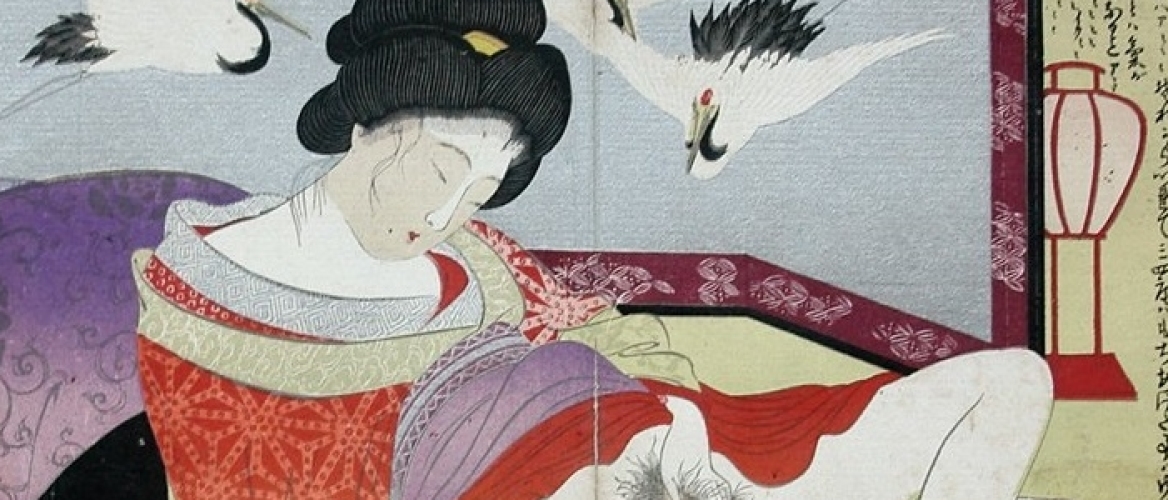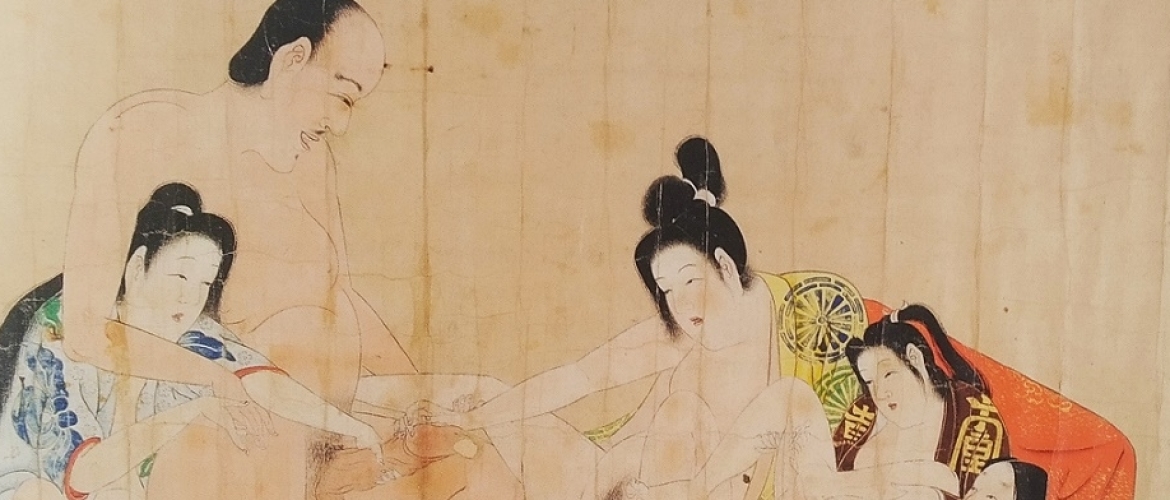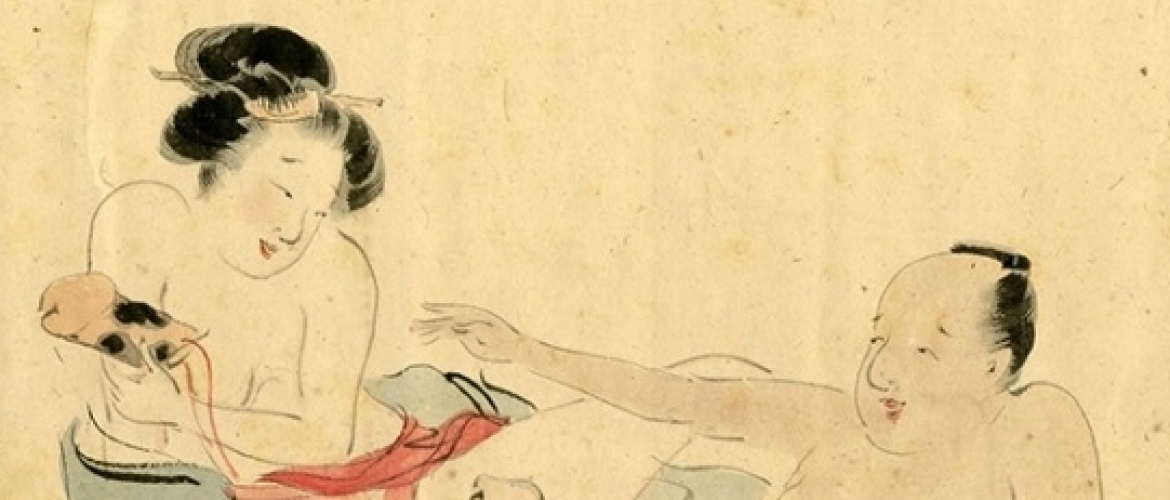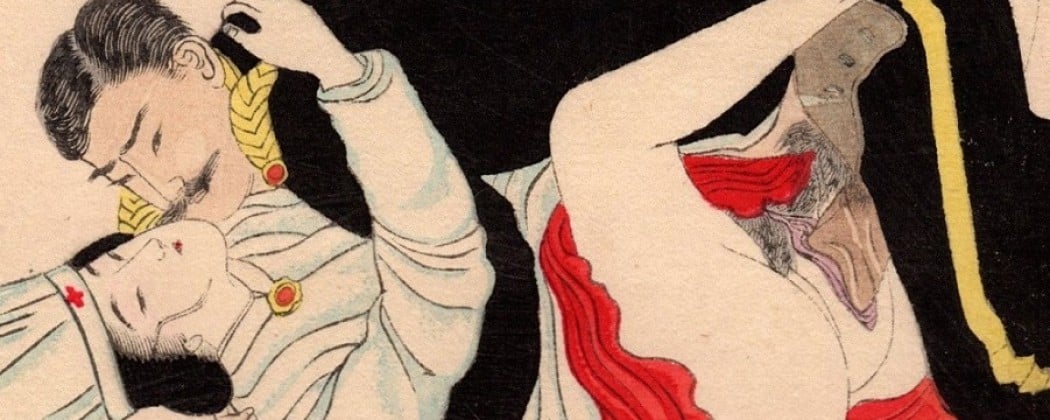
The first Sino-Japanese war (1 August 1894 – 17 April 1895) introduced a new character of erotic fantasy to the stage: the nurse. This was a professional woman whose job it was to touch men, and in some cases intimately. She also had access to, and sometimes power over the male body. Therefore, the nurse was often portrayed in shunga as the dominant partner.

Fig.1. ‘Nurse and soldier during the Sino-Japanese war’ (March)‘ (c.1899) from the series ‘Izumo no chigiri (Pledge of Izumo)‘ attributed to Terazaki Kogyo (1866-1919)
Photographic Postcards
Nurses were portrayed in frontispiece illustrations during both the Sino-Japanese and Russo-Japanese wars. They also were a favorite theme for photographic postcards during the 1890s.

Fig.2. ‘Nurses in white and black uniforms‘ (c.1910s)
Empress
The subjects were frequently representatives of the Ladies Volunteer Nursing Association (LVNA), which was predominantly staffed by noble women. The empress (Fig.2) had visited hospitals and participated in rolling bandages, as had wives of Western diplomats in Tokyo.
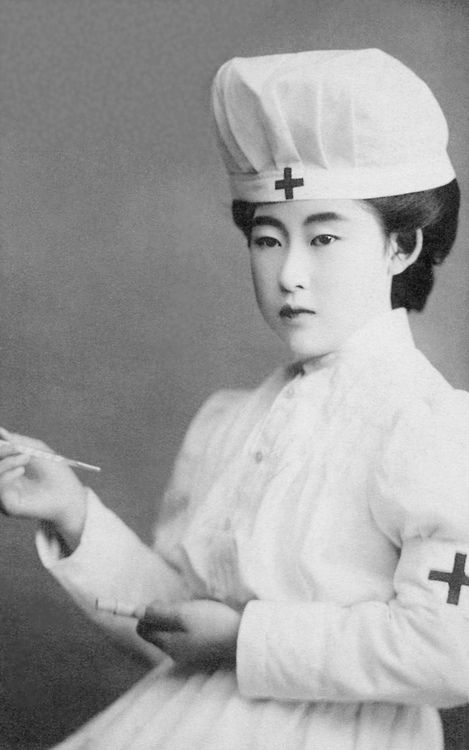
Fig.3. ‘Empress Teimei, in her role as patron of the Nippon Sekijūjisha (Japanese Red Cross).’ (c.1910s)
Russian P.O.W.
Woodblock prints of the compassionate Japanese nurses nurtering Russian prisoners-of-war were broadly publicized. Sometimes even by the Japanese Red Cross themselves.
Pledge of Izumo
The design for March (see Fig.1.) from the ‘Izumo no chigiri (Pledge of Izumo)‘ album portrays a soldier and Red Cross nurse performing coitus on the carpet of a Western interior. The interior suggests that the location is a training facility in Tokyo rather than a wartime scene at the front.
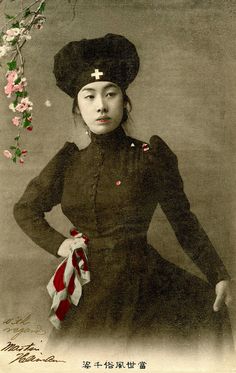
Fig.4. ‘Japanese nurse in black uniform‘ (c.1910s)
She wears a Western-style uniform, displaying her identity as a professional woman operating outside the home. In the dialogue, the soldier says:
“I was inflamed at the sight of you from afar, but since there were eyes all around us I couldn’t do anything. Today they have all gone for a walk, and so we have a good chance.”
The situation – forbidden encounters, when a couple is waiting for an opportunity when no one is around – and the dialogue could both be lifted straight from shunga of a century earlier. But the physical setting and characters are very much up-to-date.
Scarlet Underskirt
Evidently in such images the women dressed in Western-style uniform wear just a simple scarlet underskirt underneath. Although a regulation was issued in the name of the empress in 1882 urging women to wear bloomers, this did not become common until well into the 1920s.
Another impressions of the Nurse and Soldier design are featured on:
p. 446 (Fig.26) in ‘Japanese erotic art, the Hidden World of Shunga‘ by Ofer Shagan
p. 460 (Fig.7) in ‘Shunga, Sex and Pleasure in Japanese Art‘ by T. Clark, C. Andrew Gerstle
Below I have added other shunga designs with passionate nurses…
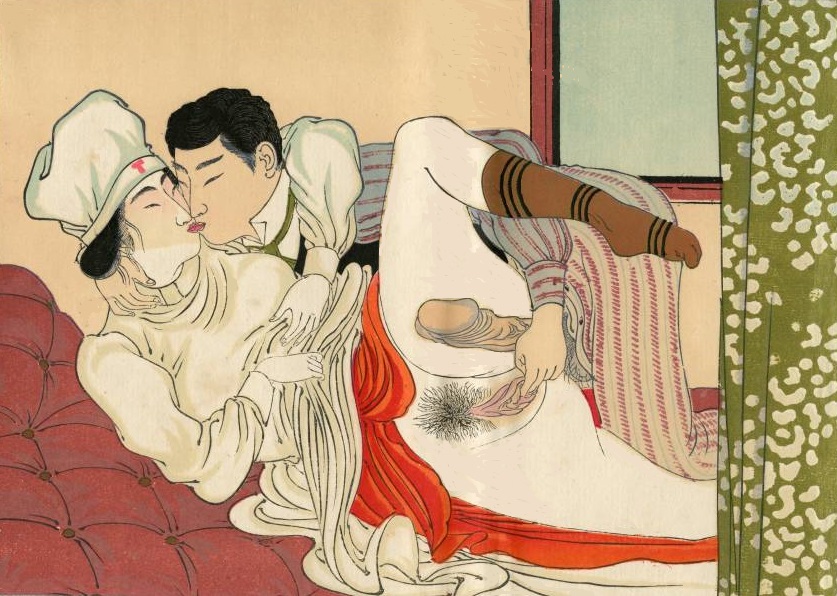
Fig.5. ‘Young doctor and nurse‘ (c.1880-1900) attributed to Terazaki Kogyo
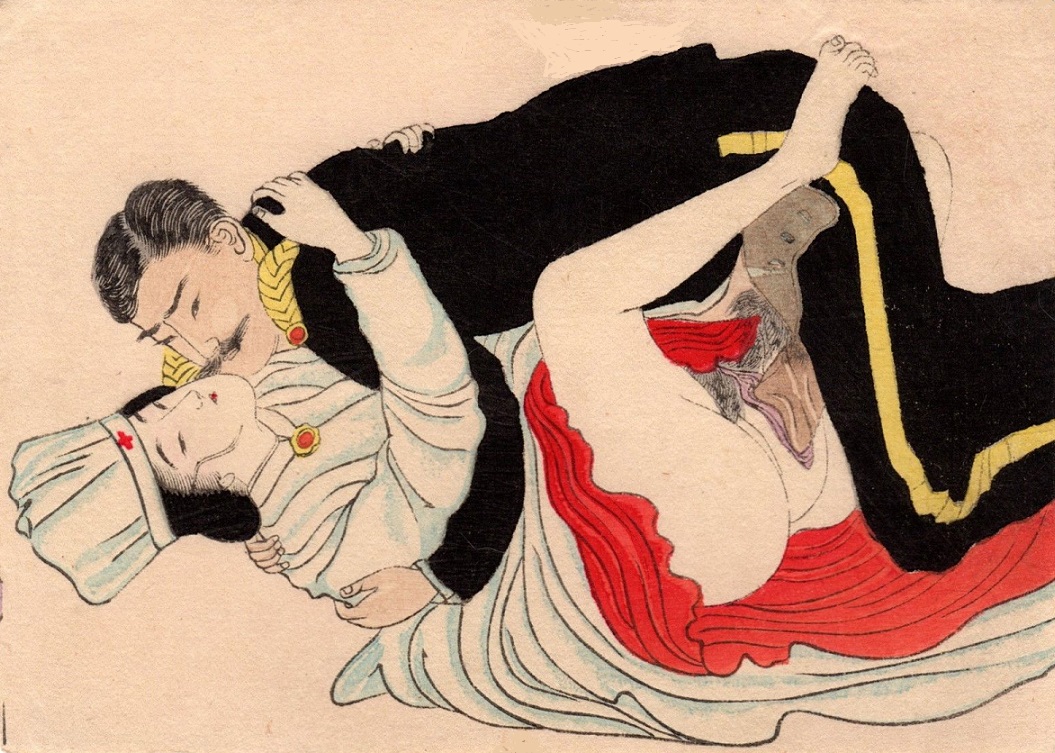
Fig.6. ‘Nurse of the Ladies’ Voluntary Nursing Association making love to an officer‘ (c.1900) by an unknown Meiji artist
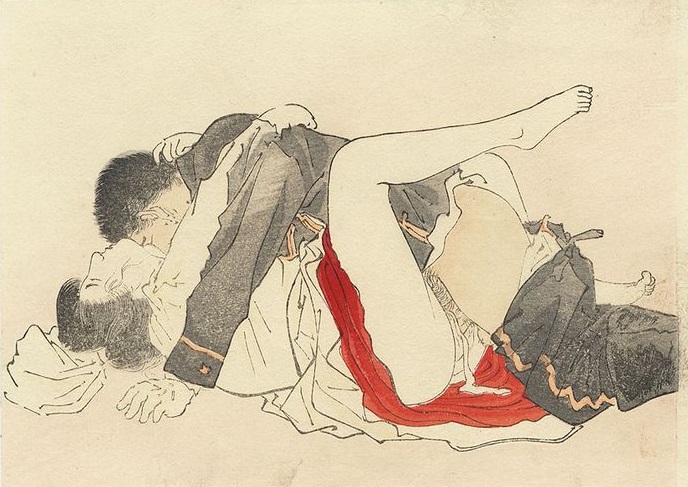
Fig.7. ‘Passionate encounter‘ (c.1899) attributed to Tomioka Eisen (1964-1905)
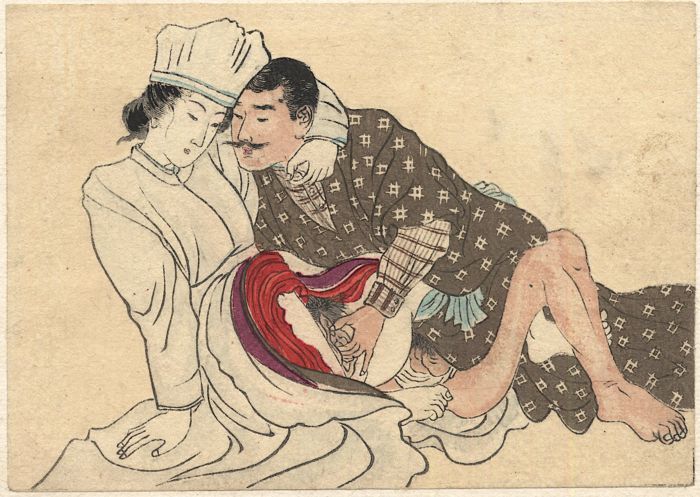
Fig.8. ‘Doctor and nurse in a passionate liaison‘ (c.1890s) attributed to Tomioka Eisen (1864-1905)
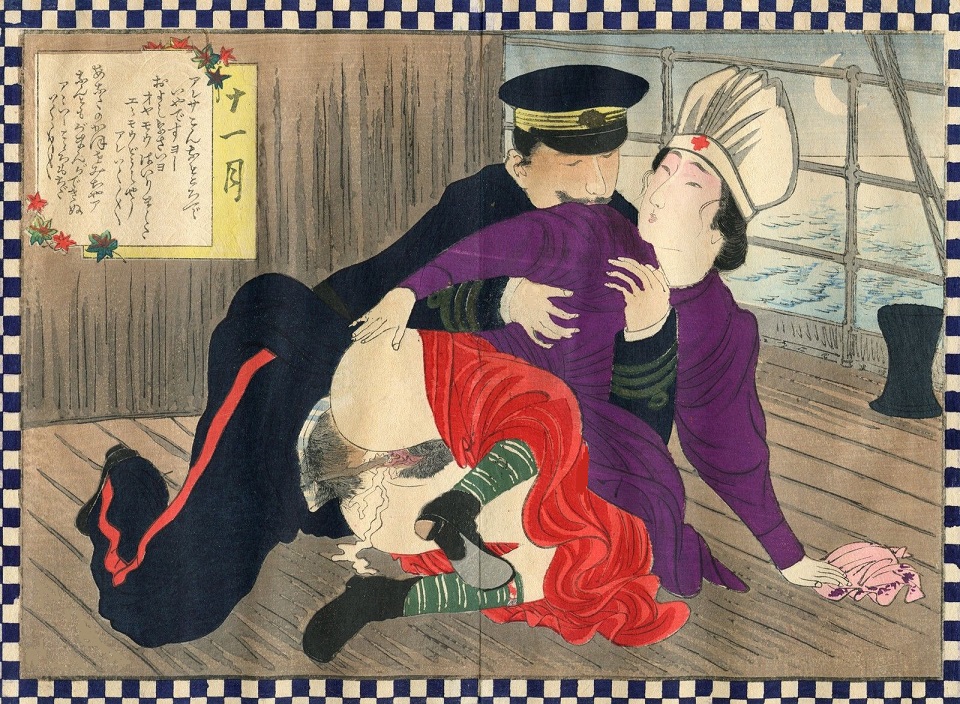
Fig.10. ‘Japanese marine officer penetrating a nurse‘ (c.1899) attributed to Terazaki Kogyo ( (1866-1919)
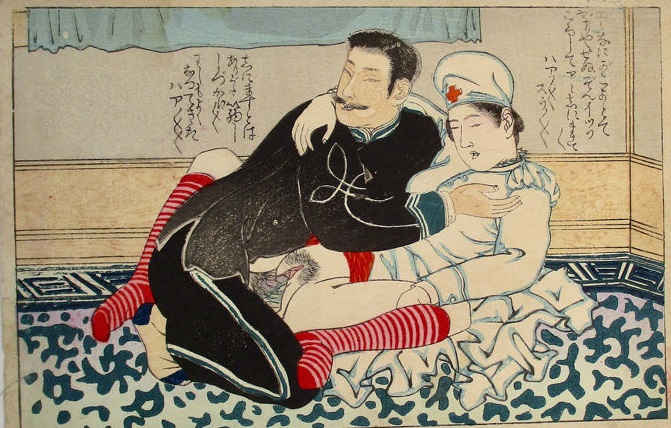
Fig.11. ‘Nurse with officer‘ (c.1910) by an unknown Meiji artist
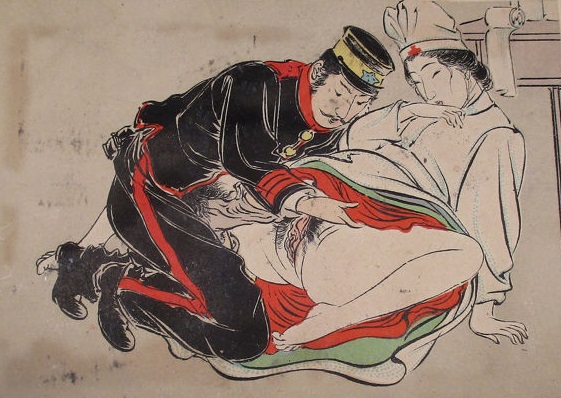
Fig.12. ‘Aroused officer and nurse‘ (c.1900) by an unknown Meiji artist
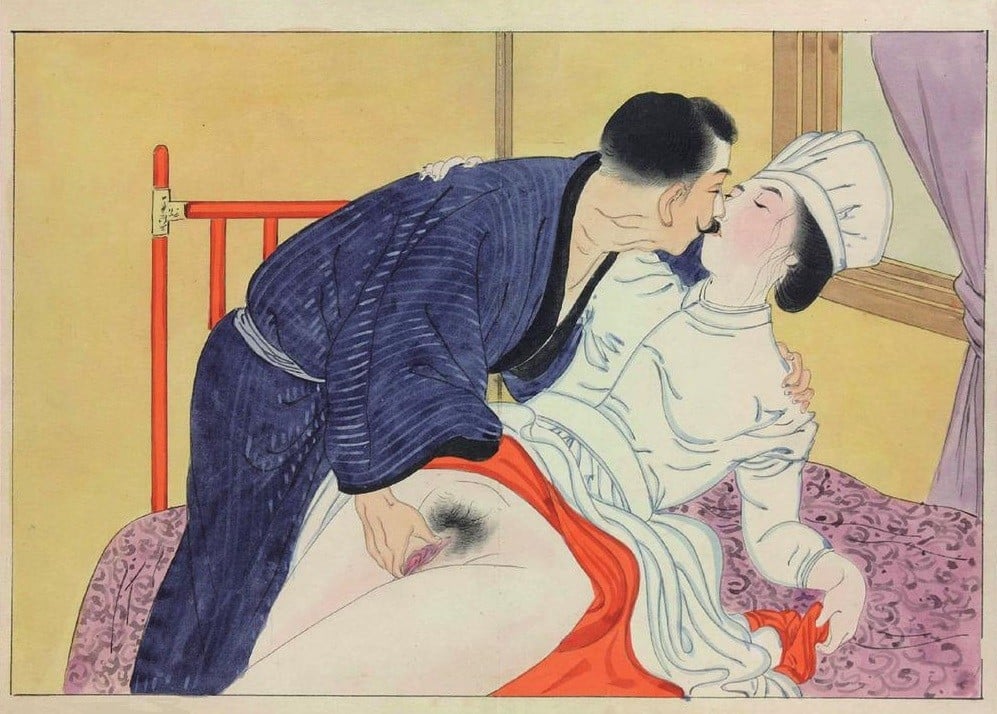
Fig.14. ‘Nurse and patient‘ (late 19th century) from the series ‘Album of erotic scenes‘ attributed to Tomioka Eisen
Red Underskirt
The first image (Fig.13) of Eisen’s ‘Album of erotic scenes‘ is set in a hospital, with a male patient seducing his young nurse. The fabrics are rendered with techniques of shading in the Westernized manner. Despite the woman’s Western clothing, it serves the erotic purposes of the picture for her to continue the shunga tradition of wearing only a red underskirt beneath her uniform.
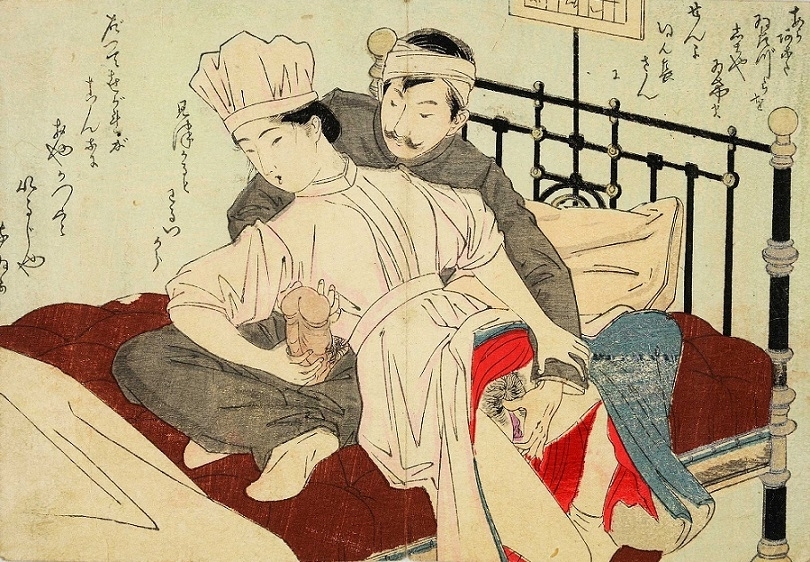
Fig.15.
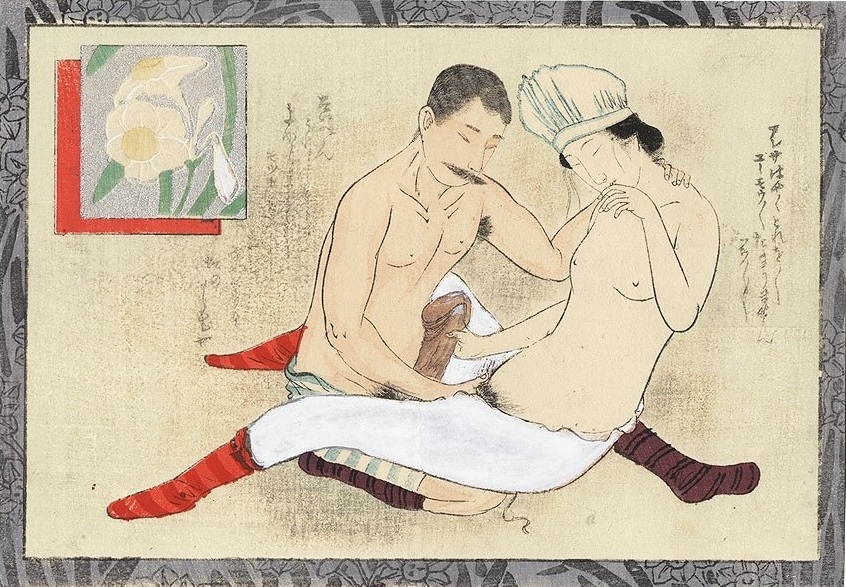
Fig.16.
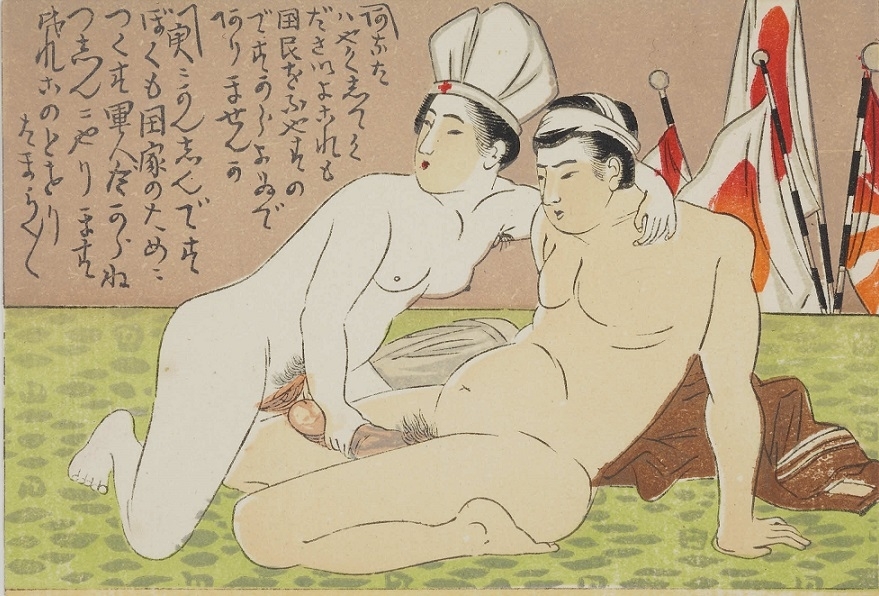
Fig.17.
Click on the following link to find more designs from Kogyo’s series ‘Izumo no chigiri (Pledge of Izumo)‘.
Click HERE for more articles on shunga designs from the Meiji period!
Source: ‘Shunga, Sex and Pleasure in Japanese Art‘ by Timothy Clark, C. Andrew Gerstle, Aki Ishigami


